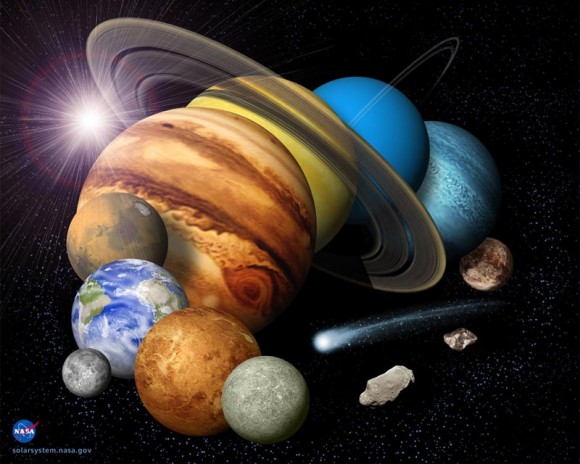 What do you really know about our galactic neighborhood? An article entitled “10 surprises about our solar system” by Larry Sessions on the EarthSky website lists some thing you probably haven’t realized. For instance,
What do you really know about our galactic neighborhood? An article entitled “10 surprises about our solar system” by Larry Sessions on the EarthSky website lists some thing you probably haven’t realized. For instance,
- The hottest planet isn’t the closest one to the sun. Mercury is closest, of course. But the hottest planet is actually Venus, with its thick atmosphere of greenhouse gasses.
- Pluto is smaller in diameter (1473 miles) than the contiguous United States.
- Movies don’t adequately represent asteroid fields. Those hunks of rock in our asteroid belt number in the tens of thousands, but the vastness of space keeps them widely spaced and the likelihood of colliding with one is small.
- There are volcanoes that spout water as magma. Remember how water expands when it freezes? On locations like Neptune’s moon Triton, the pressures of frozen water can become so great that volcanoes result.
- The edge of the solar system is not Pluto; it’s actually 1000 times farther away!
- Almost everything on Earth is a rare element.
- Mars rocks can be found on Earth. Bits of Mars have been blasted away by impacts and have found their way here as meteorites.
- Jupiter has the biggest ocean. Not that you’d want to swim in it — it’s liquid hydrogen.
- Even really small bodies can have moons. Like the 20-mile-wide asteroid Ida has its very own one-mile-wide moon.
- We actually live inside the sun. The sun’s outer atmosphere extends well beyond the visible surface, and we orbit within this tenuous atmosphere. Proof is when we see the Northern and Southern Lights.
This is just the condensed version. For all the details, visit http://earthsky.org/space/ten-things-you-may-not-know-about-the-solar-system?. The illustration came from that article.
